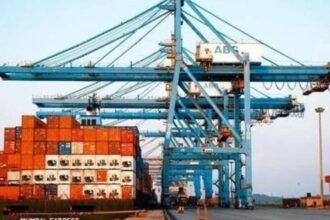The Cabinet Committee on Economic Affairs has approved the construction of 57 new Kendriya Vidyalayas throughout India, representing a game-changing investment of about ₹5,862 crore and a major step toward educational equity. This ambitious expansion, which will take place over nine years starting in 2026–2027, is more than just infrastructure development; it is a strategic rethinking of how high-quality education can support the children of central government employees while reaching India’s most under civil areas.
A first in early education history
This expansion’s innovative approach to early childhood education is what makes it unique. All 57 new schools will have Balvatikas, which are spaces specifically designed for the three-year foundational stage that covers pre-primary education, for the first time in the six-decade history of the KV system. These institutions become living laboratories for India’s educational reforms as a result of their alignment with the National Education Policy 2020, showing how foundational learning can be smoothly incorporated into the formal schooling system.
Balvatikas’s inclusion is more than just a token gesture. High-quality early childhood education significantly enhances long-term academic results, according to numerous studies. These schools will set the standard for thousands of other institutions nationwide by incorporating this stage from the beginning.
Geographic distribution in a strategic way
The locations chosen demonstrate careful planning intended to address historical injustices. Despite having sizeable populations of central government employees, twenty of the new schools will open in districts that do not currently have a KV presence. Fourteen more will serve aspirational districts, which are areas the government has determined need targeted development efforts.
Five schools will serve the difficult terrain of the Northeast and hilly regions, while four schools focus on areas affected by Left Wing Extremism. This distribution strategy builds on the progress made by the 85 KVs authorized in December 2024, which together cover 17 states and union territories that have been disregarded since March 2019.
The strategy shows a conscious change from only providing for demand in urban areas to actively building educational infrastructure where it is most needed.
Impact on economy and society
This project’s financial architecture strikes a balance between short-term capital requirements and long-term operations. About ₹2,585 crore of the total expenditure will go towards infrastructure and construction, while ₹3,277 crore will guarantee operational excellence throughout the project’s duration. These 57 schools will directly benefit over 86,000 children, with each full-fledged KV housing approximately 1,520 students. The program promises significant job creation in addition to its impact on students.
There will be 4,617 direct jobs across teaching, administration, and support staff, with each school creating 81 permanent positions. Additionally, in areas where such employment is frequently lacking, construction activities will create temporary opportunities for both skilled and unskilled workers.
Building on excellence
Since the system’s founding in 1962, Kendriya Vidyalayas have established a solid reputation as top educational establishments. With 1,288 operational schools currently serving roughly 13.62 lakh students, including three overseas campuses, the KV network is known for its creative pedagogy and exceptional board exam results. The 913 KVs’ status as PM Shri schools solidifies their position as models for implementing NEP 2020.
This expansion signifies a commitment to educational justice and goes beyond simple growth in numbers. This initiative sets a path toward truly inclusive excellence by giving priority to historically underserved areas, integrating early childhood education from the ground up, and upholding the strict standards that make KVs coveted institutions. In addition to educating students, these schools will show how wise educational investments can change communities, open doors, and fortify the bonds of national unity throughout India’s heterogeneous terrain.






